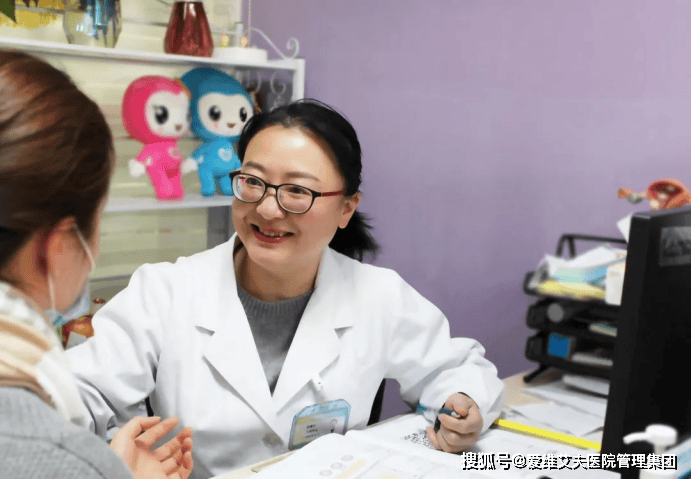With the development of medicine, the public has gained a basic understanding of the best childbearing age for both men and women. However, when discussing the topic of childbearing, a common phenomenon that provokes contemplation is this: when a couple decides to have children too late, most attention is focused on “advanced maternal age” mothers, emphasizing the risks of pregnancy for older mothers, while rarely mentioning whether the expecting fathers are “advanced paternal age.”
In this regard, Director Peng Ruiyu of the Assisted Reproduction Department at the Kunming IVF Hospital stated that older expecting mothers face more risks compared to older fathers. Why is that? Let’s delve into it.
Why are older women more at risk than older men?
Director Peng Ruiyu pointed out several aspects that explain why the risks of childbearing are higher for older women than older men.
1. Quality and Lifecycle of Eggs
A woman’s eggs start forming the foundation of the ovaries as early as 3 to 6 weeks of pregnancy, and once born, these are already mostly fixed. Generally, throughout a woman’s life, she can mature and release around 300 to 400 eggs.
However, the “lifespan” of eggs is not constant but closely linked to a woman’s age. As the age advances, the biological mechanisms within the eggs gradually age, leading to a decline in quality. During this process, DNA damage accumulates continuously, significantly increasing the risk of genetic mutations.
In contrast, sperm in men is produced after birth, taking about 64-72 days to mature in the convoluted seminiferous tubules and another 19-25 days or so in the epididymis before reaching maturity, requiring a total of approximately 90 days for the entire maturation process.
It can be seen that the potential accumulation of mutations in eggs over 20 to 40 years versus the rapid renewal of sperm over 90 days highlights a significant difference. This difference not only reflects the time span but also has a profound impact on the genetic risks and success rates during reproduction.
2. Unique Nature of Egg Cells
Egg cells are the largest cells in the human body, contrasting greatly with sperm cells that are minuscule in comparison. This difference in size goes beyond surface level and holds profound biological significance.
Egg cells provide the basic cell organelles needed for fetal development, such as endoplasmic reticulum, Golgi apparatus, and various enzymes, without which reproduction would not be viable.
Of particular importance, egg cells contain mitochondria.
Mitochondria possess their own unique genome. Due to the unique fertilization mechanism, almost all the mitochondrial genetic information in the fertilized egg comes from the egg cell itself. As mitochondrial DNA does not undergo recombination, the mitochondrial genetic information in the offspring faithfully and continuously inherits all accumulated variations from the past, along with the potential mutations in mitochondrial DNA, circling back to the primary issue.
3. Maternal Physiological Environment
During pregnancy and childbirth, older expecting mothers face more complex physiological challenges:
① As women age, their physical condition declines, leading to a less favorable fetal development environment compared to earlier ages;
② Stiffening of the pelvic floor in older mothers increases the difficulty of labor, potentially prolonging the birthing process or even resulting in complications, thereby elevating various risks for the fetus;
③ Advanced maternal age brings about more pregnancy-related health issues in women themselves.
In conclusion, older expecting mothers confront a multitude of issues compared to older expecting fathers, not only dealing with the decline in their own physical functions and physiological changes but also bearing the genetic risks arising from age-related issues.
“Advanced paternal age”: Lack of attention does not equate to absence!
Director Peng Ruiyu emphasizes that within the realms of traditional beliefs, the fallacy of the “old tree bears golden fruit” has led many men to mistakenly believe that having children at an older age is advantageous, inadvertently overlooking the concealed reproductive risks associated with advanced paternal age.
The medical field clearly defines women aged 35 or above giving birth for the first time as advanced maternal age mothers. However, for the group of “advanced paternal age,” although there is no unified definition or clear cutoff age for the optimal childbearing age, the scientific community is increasingly paying attention to this aspect. In countries like the UK and the USA, the upper age limit for sperm donors is strictly set at 40 years, while in China, it is restricted to under 45 years, serving as a precautionary measure against the risks of advanced paternal age in reproduction.
In recent years, several studies have indicated that 25 to 35 years of age is the prime reproductive period for men, with domestic scholars more inclined to regard 40 years as the “high-risk threshold” for male reproduction. Men becoming fathers after the age of 40 are classified as “advanced paternal age.”
No pain, no gain; indeed, the reproductive capability of advanced paternal age men is inferior to men of optimal childbearing age, leading to increased risks of miscarriage, fetal abnormalities, autism in offspring, mental illnesses, and other associated risks.
Therefore, we should not underestimate “advanced paternal age” men; they also carry reproductive risks!
For men over 45 with plans for reproduction, reproductive specialists recommend:
Firstly, undergo a comprehensive semen analysis, including routine sperm analysis, screening for chronic diseases and infectious diseases, to ensure sperm quality, detecting issues promptly for timely treatment;
Secondly, during the preconception period, quit smoking and reduce alcohol consumption, maintain a regular lifestyle, engage in appropriate physical exercise, and uphold a positive mindset.
Lastly, Director Peng Ruiyu reminds that although the risks for advanced paternal age are relatively lower than those for advanced maternal age, they should not be disregarded. Regardless of gender, one should not harbor any lucky expectations; timely marriage and childbearing are preferable. Remember, medical knowledge is based on extensive historical data; never attempt to challenge probabilities because you are not merely a cold set of data.


